 Embedding Evidence-Based Practice in Speech and Language Therapy: International Examples By
Embedding Evidence-Based Practice in Speech and Language Therapy: International Examples By2010 | 243 Pages | ISBN: 0470743298 | PDF | 5 MB
Like all health professionals, speech and language therapists (SLTs) need to keep themselves up-to-date with the research evidence base that is relevant to their field of practice and be able to show how this contributes to their clinical decision-making. However, it is not always clear to practitioners how evidence-based practice (EBP) can be properly embedded in their day-to-day activities. In this valuable book, Hazel Roddam and Jemma Skeat present a wealth of instructive examples by SLT contributors from around the world, showing how clinicians, educators, and researchers have risen to the EBP challenge. Embedding evidence-based practice in speech and language therapy showcases the creative ways that SLTs are developing knowledge and skills for EBP, creating contexts that support the use of evidence in practice, and working towards making evidence easily accessible and usable. It includes real-life examples of how SLTs have encountered a clinical problem or situation and have accessed and used the evidence within their day-to-day practice. The contributors come from a wide range of work settings, from services situated within large organizations to those in independent practice, and represent a range of clinical areas, from paediatric to adult and across speech, language, voice, fluency, Augmentative and Alternative Communication (AAC), and dysphagia. This book is written for an audience of clinical practitioners, at any stage of their career, and is additionally a valuable resource for SLT students and lecturers.Content: Chapter 1 Purpose of this Book (pages 1-8): Dr Hazel Roddam and Dr Jemma SkeatChapter 2 What does EBP mean to Speech and Language Therapists? (pages 9-15): Dr Hazel Roddam and Dr Jemma SkeatChapter 3 What are the Barriers to EBP in Speech and Language Therapy? (pages 16-24): Dr Jemma Skeat and Dr Hazel RoddamChapter 4 Teaching Undergraduates to become Critical and Effective Clinicians (pages 25-35): Bea SpekChapter 5 Promoting Clinical Effectiveness with Postgraduate Students (pages 36-42): Paula Leslie and James L. CoyleChapter 6 Clinical Effectiveness: not just a Journal Club (pages 43-50): Satty Boyes and Gina SutcliffeChapter 7 Using Evidence?Based Practice in Supervision (pages 51-58): Hannah CrawfordChapter 8 Meeting Skill Gaps and Training Needs (Commentary on Section Two) (pages 59-62): Dr Hazel Roddam and Dr Jemma SkeatChapter 9 The Role of Leadership in Creating Evidence?Based Services (pages 63-71): Karen DaviesChapter 10 Supporting Staff to Balance Caseload Demands (pages 72-78): Sean PertChapter 11 A Model of Clinician?Researcher Collaboration in a Community Setting (pages 79-86): Parimala RaghavendraChapter 12 Valuing Evidence?Based Practice in the Clinical Setting - a Showcase Event (pages 87-93): Sian E. Davies and Tracey C. DeanChapter 13 Launching and Sustaining an Evidence?Based Highly Specialist Service (pages 94-100): Sheena Round and Sarah BeazleyChapter 14 Strategic Approaches to Promoting the Value of EBP (Commentary on Section Three) (pages 101-104): Dr Hazel Roddam and Dr Jemma SkeatChapter 15 The Importance of Listening to the Views of Clients (pages 105-113): Pirkko RautakoskiChapter 16 Developing Evidence?Based Clinical Resources (pages 114-121): Russell Thomas CrossChapter 17 Creating Evidence?Based Policy to Facilitate Evidence?Based Practice (pages 122-128): Angie DobbrickChapter 18 Building and Supporting a Multi?Stream Clinical Evidence?Based Practice Network (pages 129-138): Tracy Kelly, Rachel Miles Kingma and Rachelle RobinsonChapter 19 Equipping Ourselves as Evidence?Based Practitioners: Tools and Resources for EBP (Commentary on Section Four) (pages 139-142): Dr Jemma Skeat and Dr Hazel RoddamChapter 20 A Community?based Project in Rural Sri Lanka (pages 143-150): Shalini Felicity GomeszChapter 21 Supporting Communicative Participation for Children with Complex Communication needs: how the Evidence Contributes to the Journey (pages 151-156): Angela Guidera, Catherine Olsson and Parimala RaghavendraChapter 22 Evidence?Based Diagnosis of Speech, Language and Swallowing following Paediatric Stroke (pages 157-162): Angela MorganChapter 23 Working with a Dysfluent Three?Year?Old from a Bilingual Family (pages 163-167): Patricia OksenbergChapter 24 Supporting Parents and Teachers in Managing Autism: an Example of an Evidence?Informed Model for Assessment and Intervention (pages 168-173): Anneli YlihervaChapter 25 Communication Therapy on the Stroke Care Unit (pages 174-178): Daniel De Stefanis and Gracie TomoloChapter 26 Working with Psychogenic Dysphonia (pages 179-183): Beth Higginbottom and Linda HouseChapter 27 Implementation of a free Fluid Protocol in an Aged Care Facility (pages 184-188): Amanda Scott and Leora BenjaminChapter 28 Prosody Intervention for Children (pages 189-194): Christina SamuelssonChapter 29 Supporting Evidence?Based Practice for Students on Placement: Making Management Decisions for Clients with down Syndrome (pages 195-200): Ruth MillerChapter 30 Bridging the Research-Clinical Divide through Postgraduate Research Training (pages 201-205): Georgia D. BertouChapter 31 Many Roads Lead to EBP (Commentary on Section Five) (pages 206-210): Dr Jemma Skeat and Dr Hazel RoddamChapter 32 Wider Consultation on Embedding EBP in SLT Practice (pages 211-221): Dr Hazel Roddam and Dr Jemma SkeatChapter 33 The Role of Reflective Practice in Supporting EBP (pages 222-229): Dr Jemma Skeat and Dr Hazel RoddamChapter 34 Embedding EBP: Future Directions (pages 230-231): Dr Hazel Roddam and Dr Jemma Skeat
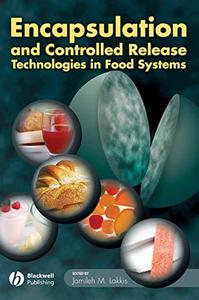


![S.T.A.L.K.E.R. 2 / STALKER 2: Heart of Chornobyl - Ultimate Edition (2024) [+UPDATE 23.12.2024 - v1.1.3] ElAmigos / Polska wersja językowa](https://i.postimg.cc/Zqd8RWGY/UZG8PBE.jpg)



































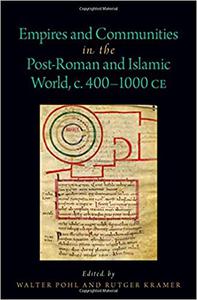

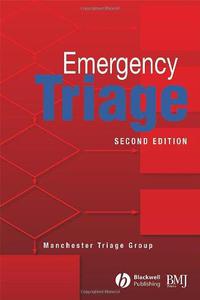
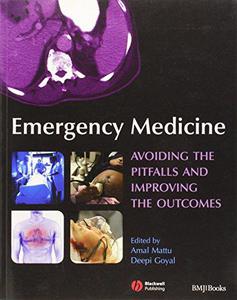
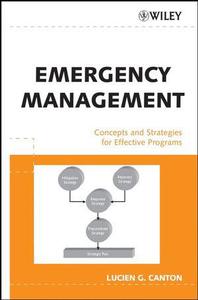

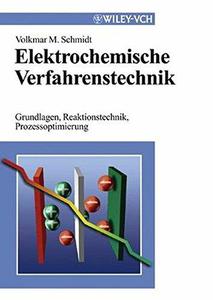









![David Gilmour - Luck and Strange (2024) [FLAC]](https://i.imgur.com/everaBc.jpeg)
![Męskie Granie Orkiestra - Męskie Granie 2024 (2024) [FLAC]](https://i.imgur.com/FAyOxrM.jpeg)
![The Rolling Stones - Hackney Diamonds (2023) [FLAC]](https://i.imgur.com/wCkyyUN.jpg)
![Lady Gaga - Harlequin (2024) [FLAC]](https://i.imgur.com/dcgIA8D.jpeg)
![Natalia Kukulska - Dobrostan (2024) [FLAC]](https://i.imgur.com/bdljG3O.jpeg)
![Kaśka Sochacka - Ta druga (2024) [FLAC]](https://i.imgur.com/hORQKvn.jpeg)
![Kuba Sienkiewicz - Pani Bóg (2024) [FLAC]](https://i.imgur.com/qijCx8Z.jpeg)
![Lanberry - Heca (2024) [FLAC]](https://i.imgur.com/8P7QfeR.jpeg)
![Sara James - PLAYHOUSE (2024) [FLAC]](https://i.imgur.com/m4f8OKg.jpeg)
![Grzegorz Hyży - EPILOG (2024) [FLAC]](https://i.imgur.com/8DA2sBr.jpeg)
![Myslovitz - WIECZORAMI CHŁOPCY WYCHODZĄ NA ULICE (2024) [FLAC]](https://i.imgur.com/l9mMtIG.jpeg)
![Krzysztof Zalewski - ZGŁOWY (2024) [FLAC]](https://i.imgur.com/vh48RAc.jpeg)
![Krzysztof Cugowski - Wiek to tylko liczba (2024) [FLAC]](https://i.imgur.com/SBzgqe2.jpeg)
![Nosowska - Kasia i Błażej (2024) [FLAC]](https://i.imgur.com/mObvVXQ.jpeg)
![sanah - Pianinkowe Kaprysy (2024) [FLAC]](https://i.imgur.com/pVjjPAa.jpeg)
![Kwiat Jabłoni - Pokaz slajdów (2023) [FLAC]](https://i.imgur.com/diERHfZ.jpg)
![Robert Cichy - Spacer po Warszawie (2024) [FLAC]](https://i.imgur.com/ixleU9o.jpeg)
![Viki Gabor - Terminal 3 (2024) [FLAC]](https://i.imgur.com/Q1KCnDs.jpeg)
![Sanah - Kaprysy (2024) [FLAC]](https://i.imgur.com/71OZm4h.jpeg)
![Męskie Granie Orkiestra - Męskie Granie 2023 (2023) [FLAC]](https://i.imgur.com/U4YHo8d.jpg)




